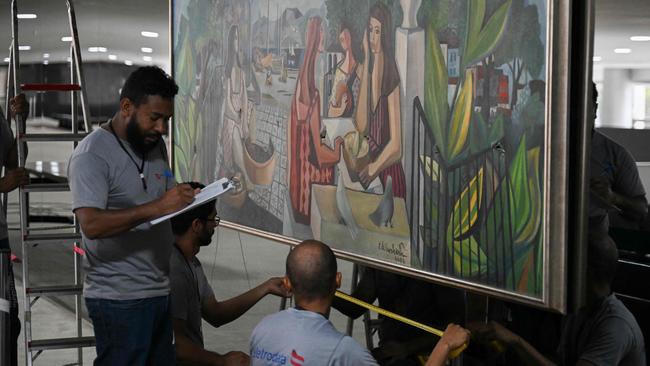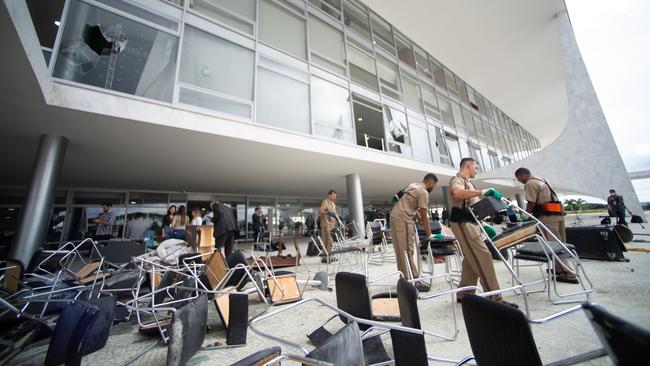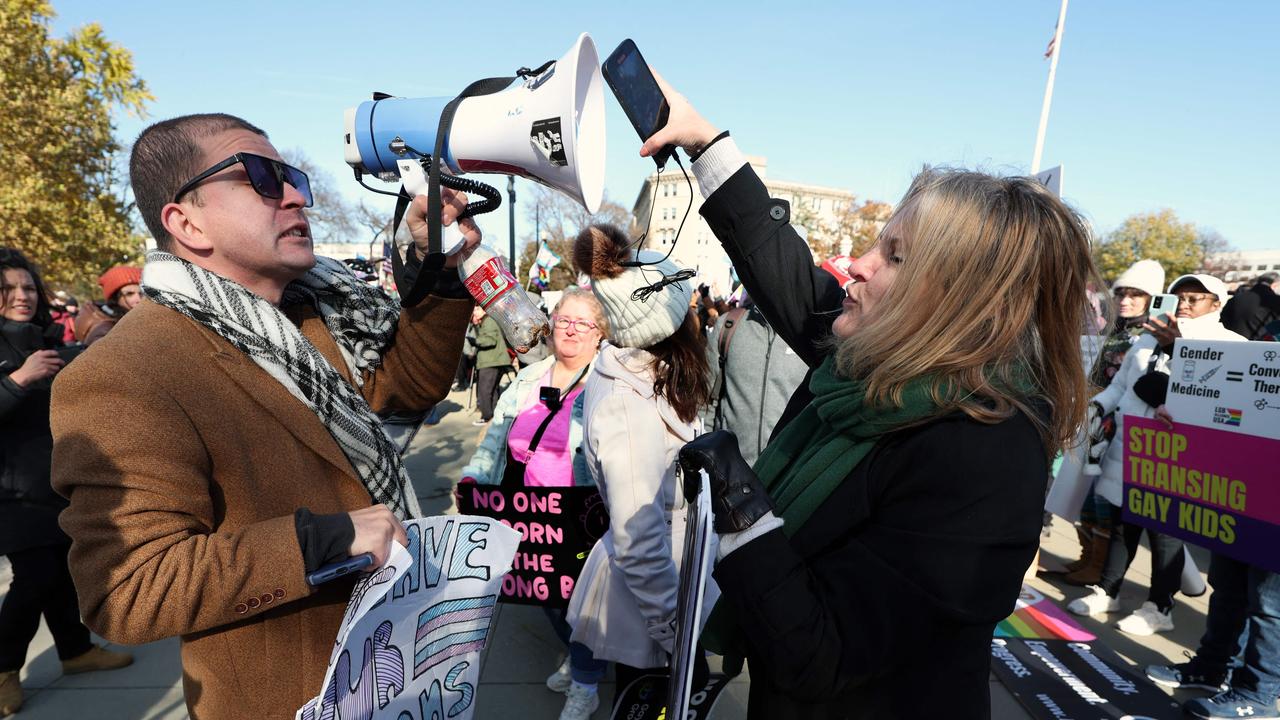Brazil sifts through wreckage of riot-torn presidential palace
Huge parts of Brazil’s Planalto Palace were destroyed almost beyond recognition by Sunday’s rampage of right-wing protesters.

There was still a lingering smell of tear gas in the air.
But that wasn’t why employees were crying as they returned to work at Brazil’s pillaged presidential palace in Brasilia, where far-right rioters left a trail of shattered glass, trashed furniture and destroyed artwork in their wake.
Huge parts of the Planalto Palace, a national treasure designed by renowned modernist architect Oscar Niemeyer, were destroyed almost beyond recognition by Sunday’s rampage, when a flood of supporters of ex-president Jair Bolsonaro invaded the building, along with the seats of congress and the Supreme Court nearby.
Ripped up floors, broken windows and doors, vandalised paintings, furniture left strewn across a reflecting pool: the damage was staggering.
Cleaning teams were frantically sweeping the floors and fishing furniture from the reflecting pool in front of the palace.
Government employees were meanwhile trying to restore some semblance of normal operations, just over a week after leftist President Luiz Inacio Lula da Silva took office on January 1.

Mr Bolsonaro, meanwhile, tweeted a photo of himself from hospital in Orlando, Florida, on Monday, where he travelled two days before the end of his term on December 31.
His wife Michelle had earlier confirmed on Instagram that the far-right leader was under observation at the hospital “due to abdominal discomfort stemming from the stabbing attack he suffered in 2018”.
Slashed canvas on a modern masterpiece, graffiti spray-painted on statues, a smashed Louis XIV clock were just some of the priceless works of art laid waste.
The futuristic constructions, featuring the emblematic curves of the iconic Brazilian architect, are for many what earned the capital – a landmark in the history of urban planning – its classification as a UNESCO world heritage site in 1987.
The Institute of National Artistic Historical Heritage said it “deeply deplored the damage caused” and said an expert assessment would be carried soon out to evaluate the restoration needs.
Graffiti calling for a military intervention to remove Lula from power was scrawled across the facades of buildings, whose insides had been torn apart by the mob during the four hours it occupied them.
At the Planalto, protesters had ripped up stone floor tiles to break windows and hurl at the security forces. Fire hoses, chairs and a large wooden table were strewn about, along with the remains of tear gas canisters fired by security forces.
The rioters also stabbed several punctures through a priceless painting, As Mulatas, by 20th-century Brazilian artist Di Cavalcanti. It is one of what officials said were about 100 works of art housed in the palace.
The damage was also glaring at the National Congress, which houses the Chamber of Deputies and the Senate.
“It’s a tragedy,” said Tiago Amaral, a 34-year-old Senate staffer.
“They destroyed pieces of our national heritage. But it’s more than that. This was also the worst attack on democracy since the 1964 coup,” which installed a two-decade military dictatorship in Brazil, he said.
“I hope they all go to jail.”
AFP


